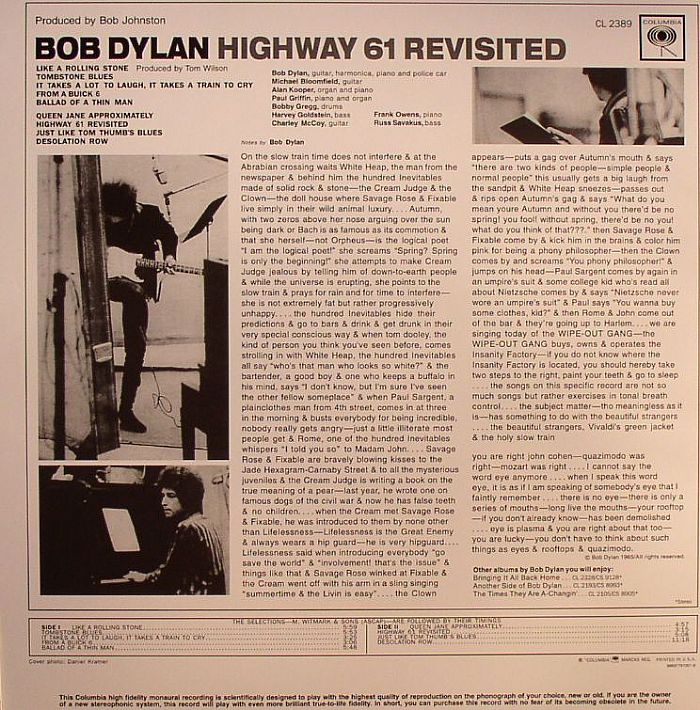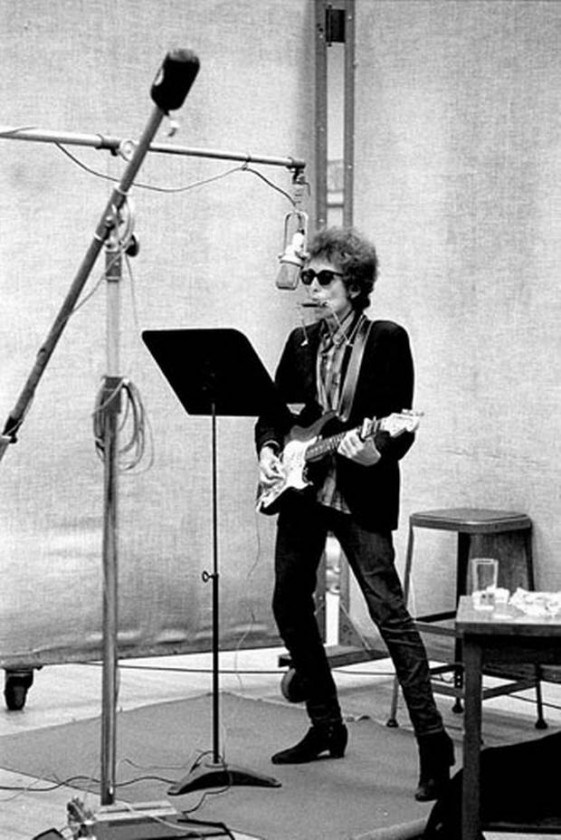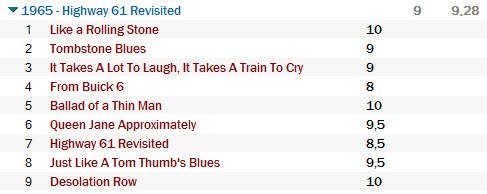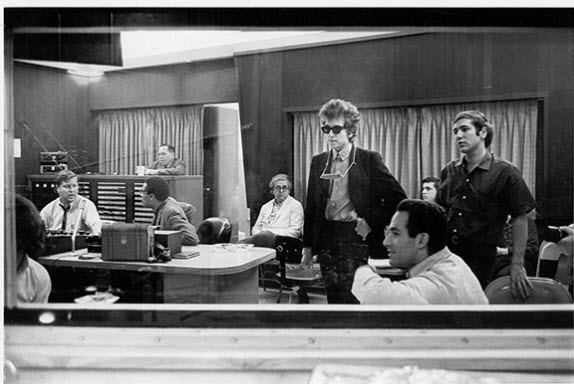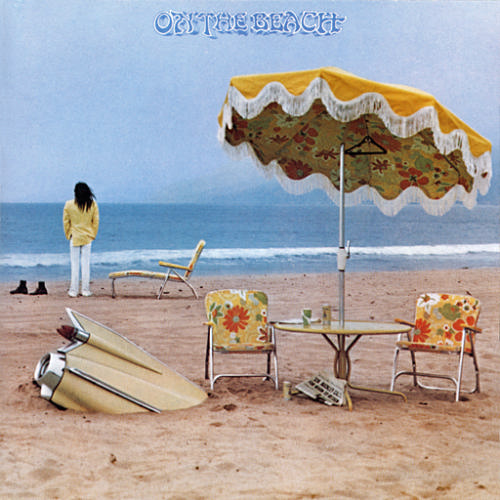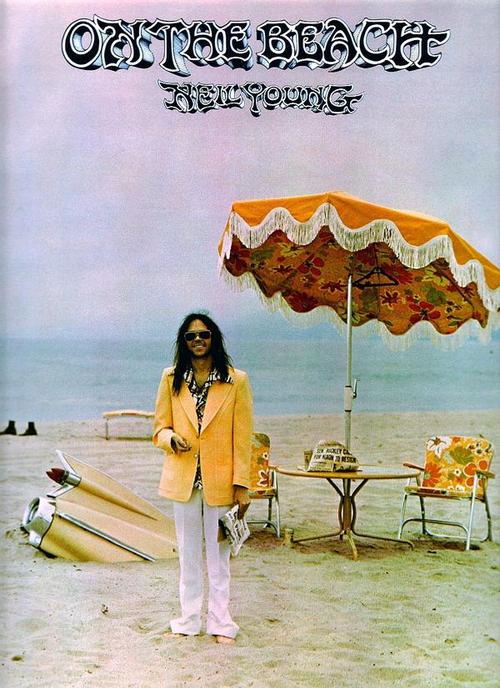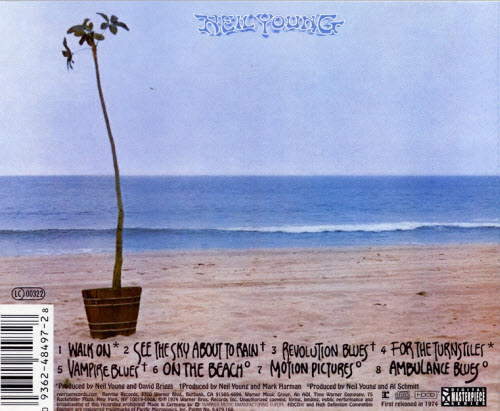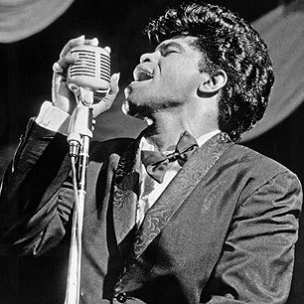40 year anniversary for On The Beach by Neil Young (read more)“Good album. One side of it particularly—the side with ‘Ambulance Blues’, ‘Motion Pictures’ and ‘On the Beach’ — it’s out there. It’s a great take.” — |
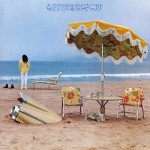 |
Bob Dylan: Pat Garrett & Billy the Kid (released July 16, 1973) (read more)Pat Garrett & Billy the Kid is the twelfth studio album and first soundtrack album by American singer-songwriter Bob Dylan, released on July 16, 1973 by Columbia Records for the Sam Peckinpah film, Pat Garrett and Billy the Kid. Dylan himself appeared in the film as the character “Alias”. Consisting primarily of instrumental music and inspired by the movie itself, the soundtrack included “Knockin’ On Heaven’s Door“, which became a trans-Atlantic Top 20 hit. Certified a gold record by the RIAA, Pat Garrett & Billy the Kid reached #16 US and #29 UK. |
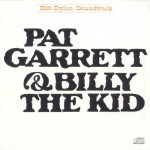 |
| William Bell (born July 16, 1939) is an American soul singer and songwriter, and one of the architects of the Stax-Volt sound. As a performer, he is probably best known for 1961′s “You Don’t Miss Your Water” (his debut single); 1968′s “Private Number” (a duet withJudy Clay, and a top 10 hit in the UK); and 1976′s “Tryin’ To Love Two”, Bell’s only US top 40 hit, which also hit No. 1 on the R&B charts. Upon the death of Otis Redding, Bell released the well-received memorial song “A Tribute to a King”. |  |
| Ellen Muriel Deason (August 30, 1919 – July 16, 2012), known professionally as Kitty Wells, was an American country musicsinger. Her 1952 hit recording, “It Wasn’t God Who Made Honky Tonk Angels”, made her the first female country singer to top the U.S. country charts, and turned her into the first female country star. Her Top 10 hits continued until the mid-1960s, inspiring a long list of female country singers who came to prominence in the 1960s. |  |
Spotify Playlist – July 16 |
|
Tag Archives: Kitty Wells
May 03 in music history
| James Brown: born May 3, 1933 (read more)“Soul Brother Number One,” “the Godfather of Soul,” “the Hardest Working Man in Show Business,” “Mr. Dynamite” — those are mighty titles, but no one can question that James Brown earned them more than any other performer. Other singers were more popular, others were equally skilled, but few other African-American musicians were so influential over the course of popular music. And no other musician, pop or otherwise, put on a more exciting, exhilarating stage show: Brown’s performances were marvels of athletic stamina and split-second timing.” ~Richie Unterberger (allmusic.com) |
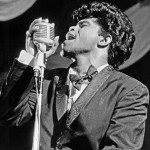 |
| Bob Dylan: 4th Slow Train Coming Recording Session, 3 May 1979 (read more) “Today I’m accused of being a follower of religion. But I’ve always been a follower! My thoughts, my personal needs have always been expressed through my songs; you can feel them there even in ‘Mr Tambourine Man’. When I write a song, when I make a record, I don’t think about whether it’ll sell millions of copies. I only think about making it, the musical end-product, the sound, and the rhythmic effect of the words. It’s purely a technical piece of work because the most important thing is to come out with something that’s perfect artistically. Even Charlie Chaplin used to say that and I respect him for that judgment.” ~Bob Dylan (to Sandra Jones – June 1981) |
 |
| Peter “Pete” Seeger (May 3, 1919 – January 27, 2014) was an American folk singer and activist. A fixture on nationwide radio in the 1940s, he also had a string of hit records during the early 1950s as a member of the Weavers, most notably their recording of Lead Belly’s “Goodnight, Irene”, which topped the charts for 13 weeks in 1950. Members of the Weavers were blacklisted during the McCarthy Era. In the 1960s, he re-emerged on the public scene as a prominent singer of protest music in support of international disarmament, civil rights, counterculture and environmental causes. |  |
| Dave Dudley (May 3, 1928 – December 22, 2003), born David Darwin Pedruska, was an American country music singer best known for his truck-driving country anthems of the 1960s and 1970s and his semi-slurred baritone. His signature song was “Six Days on the Road,” and he is also remembered for “Vietnam Blues,” “Truck Drivin’ Son-of-a-Gun,” and “Me and ol’ C.B.”. Other recordings included Dudley’s duet with Tom T. Hall, “Day Drinking,” and his own Top 10 hit, “Fireball Rolled A Seven,” supposedly based on the career and death of Edward Glenn “Fireball” Roberts. | 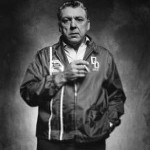 |
| “It Wasn’t God Who Made Honky Tonk Angels” (recorded: May 3 1952 Castle Studios – Nashville, Tennessee). Written by J. D. “Jay” Miller, and originally recorded by Kitty Wells. It was an answer song to the Hank Thompson hit “The Wild Side of Life.”The song — which blamed unfaithful men for creating unfaithful women — became the first No. 1 Billboard country hit for a solo female artist. In addition to helping establish Wells as country music’s first major female star, “It Wasn’t God…” paved the way for other female artists, particularly Dolly Parton, Patsy Cline, Loretta Lynn, and Tammy Wynette, and songs where women defied the typical stereotype of being submissive to men and putting up with their oft-infidel ways. | 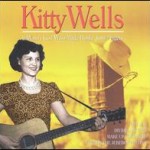 |
| Bruce Springsteen: Shoreline Amphitheatre Mountain View,CA May 03, 1988 (read more) | 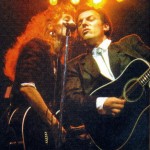 |
| Neil Young: New Orleans Jazz and Heritage Festival, May 03, 2009 (Videos) | 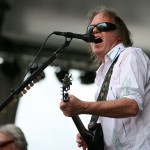 |
Spotify Playlist – May 03 |
|
August 30: Bob Dylan released Highway 61 Revisited in 1965
Redirecting to a newer version of this post….
August 30: Bob Dylan released Highway 61 Revisited in 1965
“I never wanted to write topical songs, have you heard my last two records, Bringing It All Back Home and Highway 61? It’s all there. That’s the real Dylan.”
~Bob Dylan (Frances Taylor Interview, Aug 1965)[Highway 61] Oh yes, it goes from where I used to live… I used to live related to that highway. It ran right through my home town in Minnesota. I traveled it for a long period of time
actually. It goes down the middle of the country, sort of southwest…. lot of famous people came off that highway.
~Bob Dylan (John Cohen And Happy Traum Interview, June/July 1968)Dylan’s sixth album and his first fully fledged eagle-flight into rock. Revolutionary and stunning, not just for its energy, freshness and panache but in its vision: fusing radical electric music—electric music as the
embodiment of our whole out-of-control, nervouenergy-fuelled, chaotic civilization—with lyrics that were light-years ahead of anyone else’s, Dylan here unites the force of blues-based rock’n’roll with the power of poetry.
~Michael Gray (Bob Dylan Encyclopedia)
Like a Rolling Stone:
How does it feel
How does it feel
To be without a home
Like a complete unknown
Like a rolling stone?
From Wikipedia:
| Released | August 30, 1965 |
|---|---|
| Recorded | Columbia Studio A, 799 Seventh Avenue, New York, June 15 – August 4, 1965 |
| Genre | Rock, folk rock |
| Length | 51:26 |
| Label | Columbia |
| Producer | Bob Johnston, Tom Wilson on “Like a Rolling Stone” |
Highway 61 Revisited is the sixth studio album by singer-songwriter Bob Dylan. It was released in August 1965 by Columbia Records. On his previous album, Bringing It All Back Home, Dylan devoted Side One of the album to songs accompanied by an electric rock band, and Side Two to solo acoustic numbers. For Highway 61 Revisited, Dylan used rock backing on every track, except for the closing 11-minute acoustic song, “Desolation Row”. Critics have written that Dylan’s ability to combine driving, complex, blues-based rock music with the power of poetry made Highway 61 Revisited one of the most influential albums ever recorded.
Leading off with his hit single of that summer, “Like a Rolling Stone”, the album features many songs that have been acclaimed as classics and that Dylan has continued to perform live over his long career, including “Highway 61 Revisited”, “Ballad of a Thin Man”, and “Just Like Tom Thumb’s Blues”. Dylan named the album after one of the great North American arteries, which connected his birthplace in Minnesota to southern cities famed for their musical heritage, including St. Louis, Memphis, and New Orleans.
Highway 61 Revisited peaked at number three in the United States charts and number four in the United Kingdom. The album has received multiple accolades and was ranked number four on Rolling Stone‘s 500 Greatest Albums of All Time. The single “Like a Rolling Stone” reached number two in the US charts and number four in the UK. It has been described by critics as Dylan’s magnum opus and was number one on Rolling Stone‘s 500 Greatest Songs of All Time list. Two further songs, “Desolation Row”, and “Highway 61 Revisited”, were listed at number 185 and number 364 respectively.
Ballad of a Thin Man:
Because something is happening here
But you don’t know what it is
Do you, Mister Jones?
Background:
In May 1965, Dylan returned from his tour of England feeling tired and dissatisfied with his material. “I was going to quit singing. I was very drained… I was playing a lot of songs I didn’t want to play,” Dylan told Nat Hentoff in 1966.
“It’s very tiring having other people tell you how much they dig you if you yourself don’t dig you.”
Out of this dissatisfaction, Dylan wrote an extended piece of verse which Dylan described as a “long piece of vomit”. He refined this long poem into a song consisting of four verses and a chorus—”Like a Rolling Stone”.
Dylan told Hentoff that the process of writing and recording “Like a Rolling Stone” washed away this dissatisfaction, and renewed his enthusiasm for creating music. Speaking of the breakthrough of writing that song, forty years later, Dylan told Robert Hilburn in 2004,
“It’s like a ghost is writing a song like that… You don’t know what it means except the ghost picked me to write the song.”
Highway 61 Revisited was recorded in two blocks of recording sessions, which took place in Studio A of Columbia Records in New York City, located at 799 Seventh Avenue, just north of West 52nd Street. The first session, June 15 and June 16, was produced by Tom Wilson and resulted in the single, “Like a Rolling Stone”. On July 25, Dylan performed his controversial electric set at the Newport Folk Festival, where some sections of the crowd booed his performance. Four days after Newport, Dylan returned to the recording studio. From July 29 to August 4, Dylan and his band completed recording Highway 61 Revisited, but under the supervision of a new producer, Bob Johnston.
Track listing:
Side one
1. “Like a Rolling Stone” 6:09
2. “Tombstone Blues” 5:58
3. “It Takes a Lot to Laugh, It Takes a Train to Cry” 4:09
4. “From a Buick 6” 3:19
5. “Ballad of a Thin Man” 5:58
Side two
6. “Queen Jane Approximately” 5:31
7. “Highway 61 Revisited” 3:30
8. “Just Like Tom Thumb’s Blues” 5:31
9. “Desolation Row”
—-
My ratings (0-10):
Reception:
- Singer-songwriter Phil Ochs told Broadside magazine, immediately after the record’s release, that Dylan had “produced the most important and revolutionary album ever made”. Speaking to Anthony Scaduto five years later, Ochs said, “I put on Highway 61 and I laughed and said it’s so ridiculous. It’s impossibly good, it just can’t be that good. How can a human mind do this?“
- The album cemented Dylan’s mastery of a new genre—combining verbal complexity with a hard rock sound. One 1965 reviewer wrote: “Bob Dylan used to sound like a lung cancer victim singing Woody Guthrie. Now he sounds like a Rolling Stone singing Immanuel Kant“.
- The album was a hit, peaking at number 3 on the Billboard 200 chart of top albums. In August 1967, Highway 61 was certificated as a gold record.
- Highway 61 Revisited has remained among the most highly acclaimed of Dylan’s works. Scaduto, Dylan’s first serious biographer, wrote that it may be “one of the most brilliant pop records ever made. As rock, it cuts through to the core of the music—a hard driving beat without frills, without self-consciousness.” Commenting on Dylan’s imagery, Scaduto wrote: “Not since Rimbaud has a poet used all the language of the street to expose the horrors of the streets, to describe a state of the union that is ugly and absurd.”
- Dylan critic Michael Gray called Highway 61 “revolutionary and stunning, not just for its energy and panache but in its vision: fusing radical, electrical music … with lyrics that were light years ahead of anyone else’s; Dylan here unites the force of blues-based rock’n’roll with the power of poetry. Rock culture, in an important sense, the 1960s, started here.”
- In 1995 Highway 61 Revisited was named the fifth greatest album of all time in a poll conducted by Mojo magazine.
- In 2001, the TV network VH1 placed it at number 22.
- In 2003, Rolling Stone magazine, describing Highway 61 as “one of those albums that, quite simply, changed everything”, placed it at number four in its list of the greatest albums of all time.
- The Rolling Stone list of the 500 greatest songs of all time ranked “Highway 61 Revisited”, “Desolation Row” and “Like a Rolling Stone” at #364, #185 and #1, respectively.
…. The whole rock culture, the whole post-BEATLE pop-rock world, and so in an important sense the 1960s, started here. It isn’t only ‘Like a Rolling Stone’ and the unprecedentedly long Armageddon epic ‘Desolation Row’: it’s every song. It’s the carving out of a new emotional correspondence with a new chaos-reality. There it all was in one bombshell of an album, for a generation who only recognized what world they were living in when Dylan illuminated it so piercingly.
~Michael Gray (Bob Dylan Encyclopedia)
Desolation Row:
And the riot squad they’re restless
They need somewhere to go
As Lady and I look out tonight
From Desolation Row
Personnel:
- Bob Dylan – guitar, harmonica, piano, vocals, liner notes, police siren
- Additional musicians
- Mike Bloomfield – guitar
- Harvey Brooks – bass guitar
- Bobby Gregg – drums
- Paul Griffin – organ, piano
- Al Kooper – organ, piano (Hohner pianet)
- Sam Lay – drums
- Charlie McCoy – guitar
- Frank Owens – piano
- Russ Savakus – bass guitar
- Technical personnel
- Bob Johnston – production
- Daniel Kramer – cover photographer
- Tom Wilson – production on “Like a Rolling Stone”
—
Album of the day – Highway 61 Revisited (1965):
Other August 30:
Continue reading August 30: Bob Dylan released Highway 61 Revisited in 1965
Today: Neil Young released “On The Beach” in 1974 – 39 years ago
“Good album. One side of it particularly—the side with ‘Ambulance Blues’, ‘Motion Pictures’ and ‘On the Beach’ — it’s out there. It’s a great take.”
~Neil YoungThe second in Neil’s ditch trilogy, On the Beach was also disavowed by Young and unreleased on CD until 2003. It is weirder but sharper than Time Fades Away, with harrowing lows and amazing highs, including the off-the-cuff, eight-minute folk jam “Ambulance Blues.”
~rollingstone.com
Walk on:
From Wikipedia:
| Released | July 16, 1974 |
|---|---|
| Recorded | November 30, 1973 – April 7, 1974Arrow Ranch, Woodside, California;Sunset Sound Recorders,Hollywood |
| Genre | Rock, folk rock, blues rock |
| Length | 39:40 |
| Label | Reprise |
| Producer | Neil Young, David Briggs (tracks 1 4), Mark Harman (tracks 2 3 5), Al Schmitt (tracks 6 7 8) |
On the Beach is the fifth studio album by Neil Young, released in 1974. It was unavailable on compact disc until it was released as a HDCD-encoded remastered version on August 19, 2003 as part of his Archives Digital Masterpiece Series.
Recorded after (but released before) Tonight’s the Night, On the Beach shares some of that album’s bleakness and crude production—which came as a shock to fans and critics alike, as this was the long-awaited studio follow-up to the commercially and critically successful Harvest—but also included hints pointing towards a more subtle outlook, particularly on the opener, “Walk On”.
While the original Rolling Stone review described it as “One of the most despairing albums of the decade”, later critics such as Allmusic’s William Ruhlmann used the benefit of hindsight to conclude that Young “[w]as saying goodbye to despair, not being overwhelmed by it”. The despair of Tonight’s the Night, communicated through intentional underproduction and lyrical pessimism, gives way to a more polished album that is still pessimistic but to a lesser degree.
Much like Tonight’s the Night, On the Beach was not a commercial success at the time of its release but over time attained a high regard from fans and critics alike. The album was recorded in a haphazard manner, with Young utilizing a variety of session musicians, and often changing their instruments while offering only bare-bones arrangements for them to follow (in a similar style to Tonight’s the Night). He also would opt for rough, monitor mixes of songs rather than a more polished sound, alienating his sound engineers in the process.
On the Beach:
The world is turnin’,
I hope it don’t turn away,
The world is turnin’,
I hope it don’t turn away.
All my pictures are fallin’
from the wall where
I placed them yesterday.
The world is turnin’,
I hope it don’t turn away.
[The best song on the album…] Ambulance Blues:
“Ambulance Blues” closes the album. The melody ‘unintentionally’ quotes Bert Jansch’s “Needle of Death”. In a 1992 interview for the French “Guitare & Claviers” magazine, Young discussed Jansch’ influence:
“As for acoustic guitar, Bert Jansch is on the same level as Jimi (Hendrix). That first record of his is epic. It came from England, and I was especially taken by “Needle of Death”, such a beautiful and angry song. That guy was so good. And years later, on On the Beach, I wrote the melody of “Ambulance Blues” by styling the guitar part completely on “Do You Hear Me Now?”. I wasn’t even aware of it, and someone else drew my attention to it.”
The song explores Young’s feelings about his critics, Richard Nixon and the state of CSNY. The line “You’re all just pissing in the wind” was a direct quote from Young’s manager regarding the inactivity of the quartet.
Ambulance Blues:
Track Listing:
All songs written by Neil Young.
Side one
- “Walk On” – 2:42
- “See the Sky About to Rain” – 5:02
- “Revolution Blues” – 4:03
- “For the Turnstiles” – 3:15
- “Vampire Blues” – 4:14
Side two
- “On the Beach” – 6:59
- “Motion Pictures” – 4:23
- “Ambulance Blues” – 8:56
–
The real engine of the album’s brilliance, though, is the trio of slow, long, lonely hotel room folk songs that closes out the album, peaking with Neil’s “Desolation Row”, “Ambulance Blues.”
~Rob Mitchum (pitchfork.com)
Personnel:
- Neil Young – guitar on 1 3 5 6 7 8, vocal, Wurlitzer electric piano on 2, banjo on 4, harmonica on 7 8
- Ben Keith – slide guitar on 1, vocal on 1 4, steel guitar on 2, Dobro on 4, Wurlitzer electric piano on 3, organ on 5, hand drums on 6, bass on 7 8
- Tim Drummond – bass on 2 5 6, percussion on 5
- Ralph Molina – drums on 1 5 6, vocal on 1, hand drums on 7 8
Additional personnel
- Billy Talbot – bass on 1
- Levon Helm – drums on 2 3
- Joe Yankee – harp on 2, electric tambourine on 8
- David Crosby – guitar on 3
- Rick Danko – bass on 3
- George Whitsell – guitar on 5
- Graham Nash – Wurlitzer electric piano on 6
- Rusty Kershaw – slide guitar on 7, fiddle on 8
–
..On the Beach was savage and, ultimately, triumphant. “I’m a vampire, babe,” Young sang, and he proceeded to take bites out of various subjects: threatening the lives of the stars who lived in L.A.’s Laurel Canyon (“Revolution Blues”); answering back to Lynyrd Skynyrd, whose “Sweet Home Alabama” had taken him to task for his criticisms of the South in “Southern Man” and “Alabama” (“Walk On”); and rejecting the critics (“Ambulance Blues”). But the barbs were mixed with humor and even affection, as Young seemed to be emerging from the grief and self-abuse that had plagued him for two years. But the album was so spare and under-produced, its lyrics so harrowing, that it was easy to miss Young’s conclusion: he was saying goodbye to despair, not being overwhelmed by it.
~William Ruhlmann (allmusic.com)
Complete album @ youtube:
Album @ spotify:
Other July 16:
Continue reading Today: Neil Young released “On The Beach” in 1974 – 39 years ago
Today: The late James Brown was born in 1933 – 80 years ago
When I’m on stage, I’m trying to do one thing: bring people joy. Just like church does. People don’t go to church to find trouble, they go there to lose it.
~James BrownThe one thing that can solve most of our problems is dancing.
~James Brown“Soul Brother Number One,” “the Godfather of Soul,” “the Hardest Working Man in Show Business,” “Mr. Dynamite” — those are mighty titles, but no one can question that James Brown earned them more than any other performer. Other singers were more popular, others were equally skilled, but few other African-American musicians were so influential over the course of popular music. And no other musician, pop or otherwise, put on a more exciting, exhilarating stage show: Brown’s performances were marvels of athletic stamina and split-second timing.
~Richie Unterberger (allmusic.com)
Papa’s Got a Brand New Bag – Live at Montreux:
James Brown tribute youtube playlist:
From Wikipedia:
James Joseph Brown (May 3, 1933 – December 25, 2006) was an American singer, songwriter, musician, and recording artist. He is one of the founding fathers of funk music and is a major figure of 20th century popular music and dance. In a career that spanned six decades, Brown profoundly influenced the development of many different musical genres.
I Feel Good:
Brown moved on a continuum of blues and gospel-based forms and styles to a profoundly “Africanized” approach to music making. First coming to national public attention in the mid 1950s as a member of the R&B singing group The Famous Flames, Brown performed in concerts, first making his rounds across the Chitlin’ Circuit, and then across the country and later around the world, along with appearing in shows on television and in movies. Although he contributed much to the music world through his hitmaking, Brown holds the record as the artist who charted the most singles on the Billboard Hot 100 without ever hitting number one on that chart.
For many years, Brown’s touring show was one of the most extravagant productions in American popular music. At the time of Brown’s death, his band included three guitarists, two bass guitar players, two drummers, three horns and a percussionist. The bands that he maintained during the late 1960s and 1970s were of comparable size, and the bands also included a three-piece amplified string section that played during ballads. Brown employed between 40 and 50 people for the James Brown Revue, and members of the revue traveled with him in a bus to cities and towns all over the country, performing upwards of 330 shows a year with almost all of the shows as one-nighters. In 1986, he was inducted into the Rock and Roll Hall of Fame and in 2000 into the Songwriters Hall of Fame. Brown died on Christmas Day 2006 from heart failure after becoming ill two days earlier and being hospitalized for hours. He is buried in Beech Island, South Carolina.
Night Train:
Playlist of the day:
Other May-03:
Continue reading Today: The late James Brown was born in 1933 – 80 years ago

